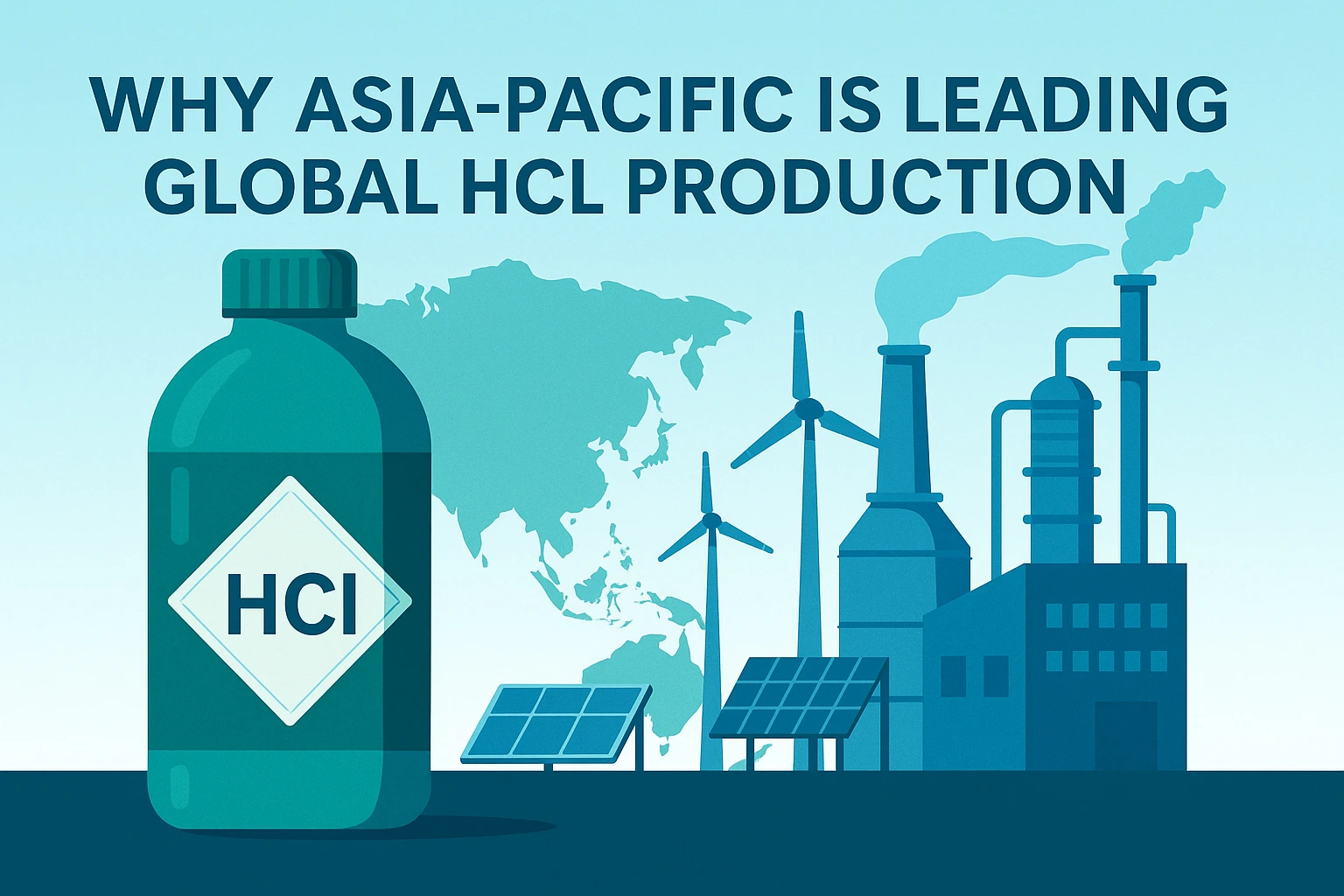Why Asia-Pacific Is Leading Global HCl Production
Water Treatment Chemicals

Table of Content
-
Introduction: The Scale of Asia-Pacific’s HCl Market
-
Industrial Growth, Demand Drivers, and Regional Dynamics
-
Competitive Advantages: Cost, Capacity, and Trade
-
Sustainability, Regulatory, and Future Trends
-
Conclusion: Asia-Pacific’s Central Role in Global HCl Supply
1. Introduction: The Scale of Asia-Pacific’s HCl Market
Asia-Pacific commands a dominant position in the global hydrochloric acid (HCl) supply chain, representing both the world’s largest market and production center. In 2025, regional HCl market size has surged past $2.3 billion, with annual growth projections outpacing the global average. Robust demand across China, India, Indonesia, and Japan underlines the scale, as locally-surging industries and population growth drive consistent upward trends. The region’s production—now exceeding 7 million tons annually—is anchored by local manufacturing giants and export-oriented chlor-alkali plants.
2. Industrial Growth, Demand Drivers, and Regional Dynamics
-
Manufacturing Growth: Asia-Pacific’s industrialization—especially in chemicals, steel, textiles, and pharmaceuticals—ensures huge-volume and diverse HCl use for pickling, ore processing, and pH control.
-
Sector Leaders: China is the largest single producer and consumer, followed by India, Japan, and Indonesia. Indonesia alone consumes over 2.2 million tons annually for metal processing, fertilizers, and industrial cleaning, with growth rates topping 9% in 2025.
-
Growth Markets: Expanding chemical production bases, rapid infrastructure investments, and rising pharmaceuticals manufacturing boost HCl demand, while government-backed mega projects fuel new plant construction and capacity expansion.
3. Competitive Advantages: Cost, Capacity, and Trade
-
Cost Efficiency: Asia-Pacific’s significant cost advantage comes from scale, abundant feedstocks, localized production, and competitive labor—enabling manufacturers to offer lower prices compared to Europe and North America.
-
Supply Chains: Tight, well-integrated supply networks and regional trade agreements position APAC as a primary HCl exporter as well as consumer, with local giants like BASF, AkzoNobel, Sumitomo, and Henan Chemical operating large facilities that anchor both B2B and export pipelines.
-
Resilience: Modular, flexible production and rising investments in safety and digital process controls counteract global disruptions, giving the region rapid recovery from shocks like COVID-19 and global supply constraints.
4. Sustainability, Regulatory, and Future Trends
-
Regulatory Shifts: Regional authorities are implementing stricter HCl handling, storage, and emissions compliance, prompting investment in safer, cleaner production.
-
Green Trends: New projects increasingly incorporate closed-loop systems and zero-discharge goals, as well as advanced wastewater treatment and emissions recycling.
-
Future Outlook: Investors and multinationals are expanding further into Asia, betting on rapid HCl demand growth for battery, EV, and high-tech manufacturing sectors.
5. Conclusion: Asia-Pacific’s Central Role in Global HCl Supply
Asia-Pacific’s industrial strength, production capacity, and integrated markets make it indispensable to the world’s hydrochloric acid supply and price stability. With accelerating investments and new sectoral growth, APAC’s dominance is set to extend into the next decade—making the region essential for buyers, brokers, and global brands in 2025.

Leave a Comment